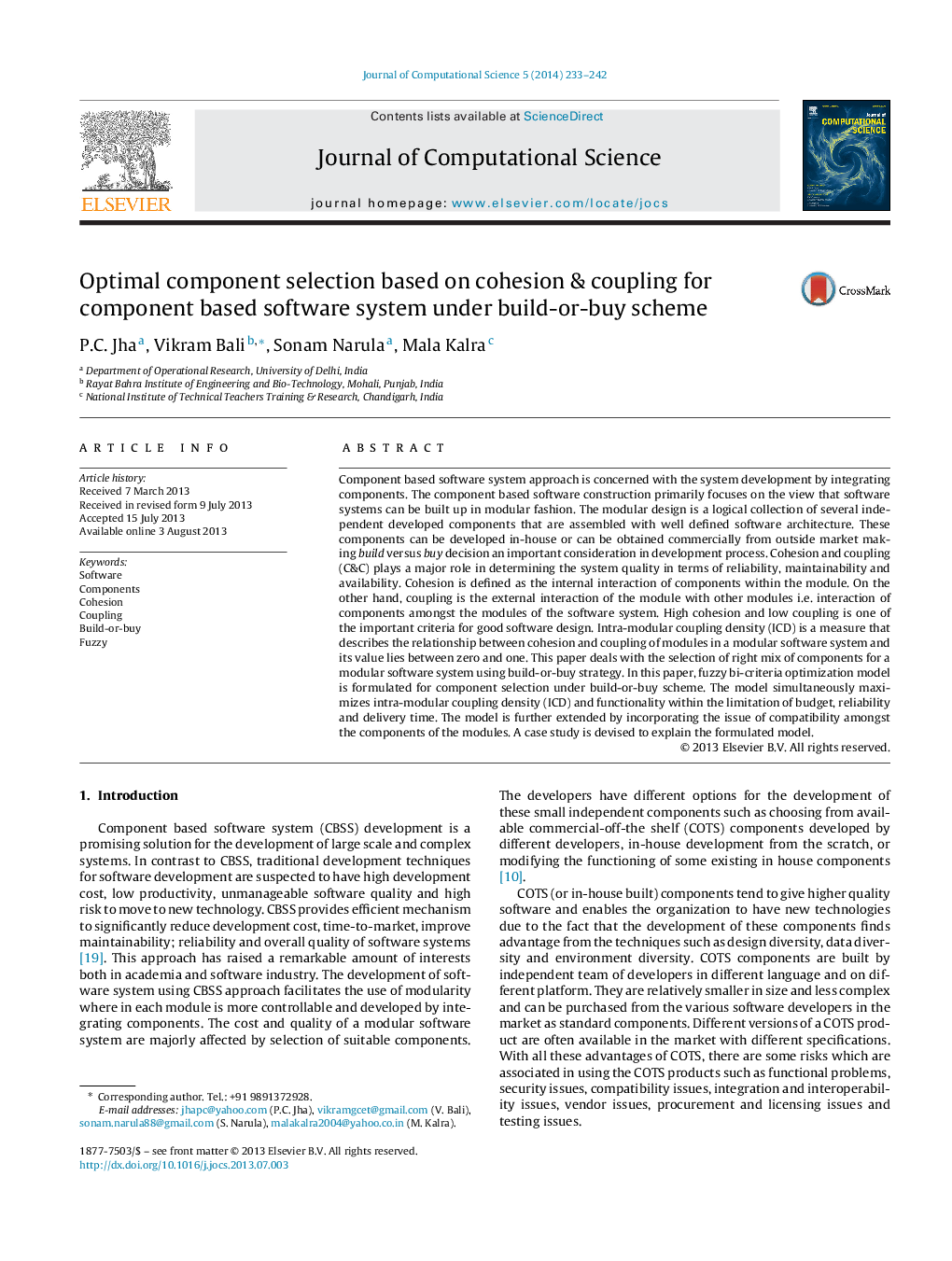| Article ID | Journal | Published Year | Pages | File Type |
|---|---|---|---|---|
| 429395 | Journal of Computational Science | 2014 | 10 Pages |
•The work is in the area of component based software system development.•Fuzzy bi-criteria optimization model for component selection under build-or-buy scheme is formulated.•The model simultaneously maximizes intra-modular coupling density (ICD) and functionality within the limitation of budget, reliability and delivery time.•A case study is devised to explain the formulated model.
Component based software system approach is concerned with the system development by integrating components. The component based software construction primarily focuses on the view that software systems can be built up in modular fashion. The modular design is a logical collection of several independent developed components that are assembled with well defined software architecture. These components can be developed in-house or can be obtained commercially from outside market making build versus buy decision an important consideration in development process. Cohesion and coupling (C&C) plays a major role in determining the system quality in terms of reliability, maintainability and availability. Cohesion is defined as the internal interaction of components within the module. On the other hand, coupling is the external interaction of the module with other modules i.e. interaction of components amongst the modules of the software system. High cohesion and low coupling is one of the important criteria for good software design. Intra-modular coupling density (ICD) is a measure that describes the relationship between cohesion and coupling of modules in a modular software system and its value lies between zero and one. This paper deals with the selection of right mix of components for a modular software system using build-or-buy strategy. In this paper, fuzzy bi-criteria optimization model is formulated for component selection under build-or-buy scheme. The model simultaneously maximizes intra-modular coupling density (ICD) and functionality within the limitation of budget, reliability and delivery time. The model is further extended by incorporating the issue of compatibility amongst the components of the modules. A case study is devised to explain the formulated model.
